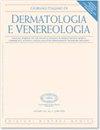自体反应性T细胞在天疱疮中的作用。肇事者和目标。
IF 2
Q3 Medicine
Giornale Italiano Di Dermatologia E Venereologia
Pub Date : 2020-11-12
DOI:10.23736/S0392-0488.20.06706-1
引用次数: 3
摘要
寻常型天疱疮(Pemphigus vulgaris, PV)是一种自身免疫性起泡性疾病,在这种疾病中,针对表皮钙粘蛋白的自身抗体,如粘连蛋白(Dsg)1和Dsg3,导致皮肤和粘膜出现水泡和糜烂。自身反应性CD4+ T细胞通过与产生自身抗体的B细胞相互作用,对疾病的诱导和延续至关重要。PV与某些人类白细胞抗原(HLA)等位基因有较强的遗传相关性,其中HLA- drb1 *04:02和DQB1*05:03在患者中最常见。最近,全基因组关联研究提供了一种新的方法来鉴定单核苷酸多态性,以及已知的与HLA等位基因的关联。失去对Dsgs和其他自身抗原的耐受性是PV发病机制中的一个关键事件。表位扩散有助于PV的进展,导致dsg特异性自身免疫反应扩展到自身抗原的其他分子表位,如粘菌素或毒蕈碱受体。CD4+CD25+ FoxP3+调节性t细胞的改变被认为有助于PV的发展,代表了治疗干预的合适靶点。一些CD4+ t细胞亚群和细胞因子参与了PV的发病机制,而Th2细胞是被广泛研究的群体。最近,其他T细胞亚群,如T滤泡辅助细胞和Th17,作为PV发病机制的新潜在参与者而受到关注。局部自身抗体的产生在PV患者的病变皮肤在三级淋巴器官的参与目前讨论,但尚未澄清。在这里,我们将回顾目前关于天疱疮自身反应性T细胞的发展,特点和功能的知识,并提出目前新的T细胞靶向治疗方法。本文章由计算机程序翻译,如有差异,请以英文原文为准。
Autoreactive T cells in pemphigus. Perpetrator and target.
Pemphigus vulgaris (PV) is an autoimmune blistering disease, in which autoantibodies against epidermal cadherins, such as desmoglein (Dsg)1 and Dsg3, lead to the development of blisters and erosions on the skin and the mucous membranes. Autoreactive CD4+ T cells are essential for the induction and perpetuation of the disease by interaction with B cells producing autoantibodies. PV has a strong genetic association with certain human leucocyte antigen (HLA) alleles with being HLA-DRB1*04:02 and DQB1*05:03 the most prevalent in patients. Recently, genome-wide association studies have provided a new approach to identify single nucleotide polymorphisms, alongside the known association with HLA alleles. Loss of tolerance against Dsgs and other autoantigens is a critical event in the pathogenesis of PV. Epitope spreading contributes to the progression of PV, leading to an extension of the Dsg-specific autoimmune response to other molecular epitopes of autoantigens, such as desmocollins or muscarinic receptors. Alterations in CD4+CD25+ FoxP3+ regulatory T-cells are thought to contribute to the development of PV representing a suitable target for therapeutic interventions. Several CD4+ T-cell subsets and cytokines are involved in the pathogenesis of PV, while Th2 cells are the extensively studied population. Recently, other T cell subsets like T follicular helper cells and Th17 have gained attention as new potential players in PV pathogenesis. The involvement of local autoantibody production in the lesional skin of PV patients in tertiary lymphoid organs is currently discussed but not yet clarified. Here, we will review the current knowledge about the development, characteristics and function of autoreactive T cells in pemphigus and present current new T cell-targeted therapeutic approaches.
求助全文
通过发布文献求助,成功后即可免费获取论文全文。
去求助
来源期刊

Giornale Italiano Di Dermatologia E Venereologia
DERMATOLOGY-
CiteScore
1.90
自引率
0.00%
发文量
0
审稿时长
6-12 weeks
期刊介绍:
The journal Giornale Italiano di Dermatologia e Venereologia publishes scientific papers on dermatology and sexually transmitted diseases. Manuscripts may be submitted in the form of editorials, original articles, review articles, case reports, therapeutical notes, special articles and letters to the Editor.
Manuscripts are expected to comply with the instructions to authors which conform to the Uniform Requirements for Manuscripts Submitted to Biomedical Editors by the International Committee of Medical Journal Editors (www.icmje.org). Articles not conforming to international standards will not be considered for acceptance.
 求助内容:
求助内容: 应助结果提醒方式:
应助结果提醒方式:


